Let's make another stop in town Treguier (Treguier) . It is worth coming here to see the masterpiece of religious architecture - Saint-Tugdual Cathedral , one of the most beautiful places of worship in Brittany.
Coast of Rose Granite - one of the most romantic places not only in the province of Brittany, but throughout northern France, a real natural phenomenon.
The nearest settlement to it is the village Ploumanac (Ploumanac "h) , where there are many souvenir shops and restaurants for tourists, not far from the village there is a magnificent sandy beach. But people come here primarily to admire the stunning beauty of the nearby rocks. From the village along the coast there is the so-called "customs officer's path". Literally from every point of this trail there is a magnificent view of the town of Perros-Guirec, located approximately 5 km away, and of the fantastically beautiful coastline, forming bays protruding directly into the ocean - the Pink Granite Coast.
This coast is a heap of pink granite rocks, and each stone here is unique in its own way. Some stones even got their own names, for example: “Turtle” or “Napoleon's cocked hat”. Indeed, one does not need to have too much imagination to guess animal figures or familiar objects in granite blocks.
And above all this granite kingdom rises a lighthouse, carefully restored after the war.
It is especially beautiful here at sunset, when the stones turn from pink to almost red, and the waters of the ocean turn absolutely blue. Fantastic in its beauty, the picture leaves almost no one indifferent.
The next stop on our journey is Morlaix.

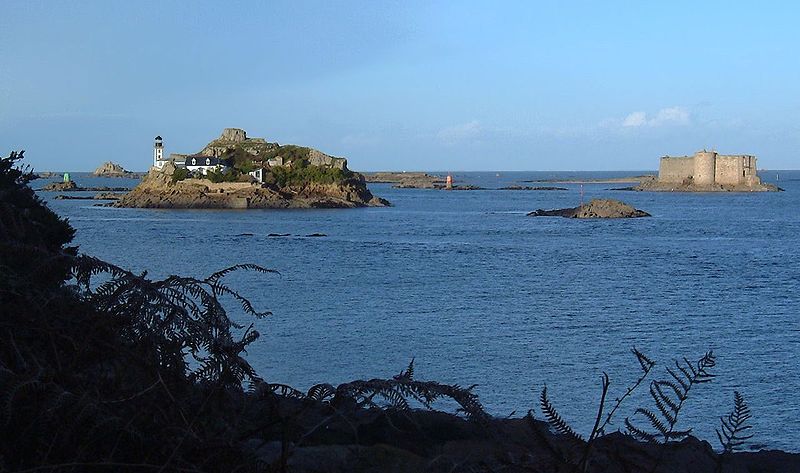
This town has a wonderful ancient aqueduct .
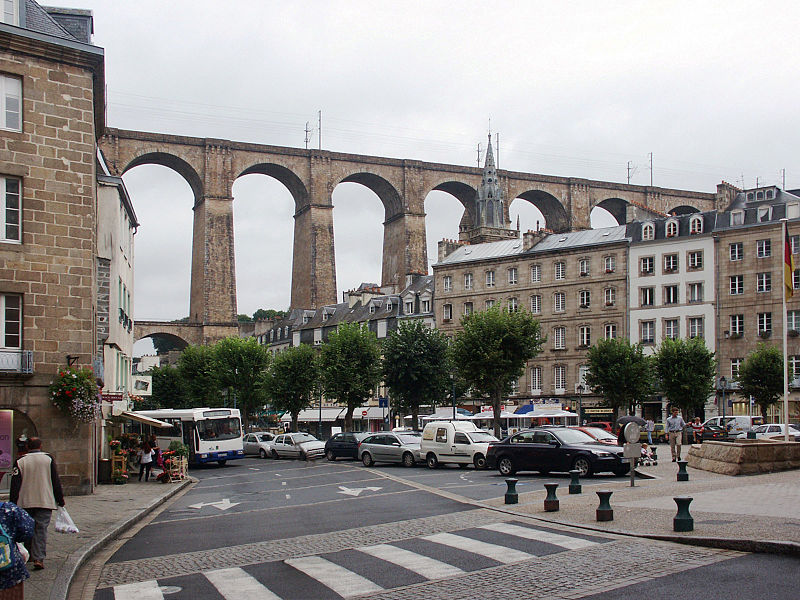
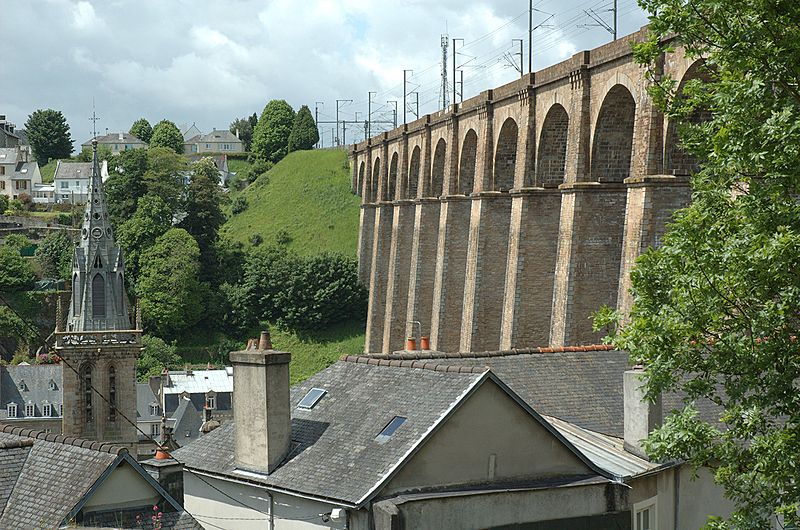
One of the local attractions is city shrines of the 16th-17th centuries called in French enclos paroissiaux . This is a special complex of buildings, consisting of a cemetery, a baptistery, a baptismal and a calvary depicting scenes of the Passion and the crucifixion of Christ, as well as a wall that separates the sanctuary from the city. Usually it is located near the city church.
The most beautiful sanctuaries of Brittany can be seen near Morlaix on the coast at Roscoff and Quimper. That's where we'll go.
Initially Roscoff was a small fishing village. By the end of the XVIII century. Roscoff became the second most important port, receiving large ferries from the islands of Great Britain, the bulk of the population were peasants who successfully combined their activities with fishing and shipping. Many tourists from the UK start their journey through Brittany from this ancient city. The fact is that one of the companies organizing ferry tours between France and England is located in the port of Roscoff. Roscoff is one of the most important trading ports, thanks to which trade is carried out between mainland Europe and England.
Roscoff is famous not only for its unusually mild climate and amazing sandy beaches, but also for the diversity of local architecture. It is a city with a rich historical past. It was here that in 1899 the first wellness center offering courses of treatment with sea water. The Roscoff Wellness Center has always used the latest technology.
Despite the fact that the town is small, there are several attractions that are worth seeing: aquarium, fish farm, as well as Gothic Cathedral of Our Lady in Croa Bach (Kroas Batz) , whose construction dates back to the 16th century. The sights of the city are also residential houses of shipbuilders of the XV-XVII centuries .
From Roscoff you can take a trip to Batz Island located near the city of Roscoff. The size of the island does not exceed - 3.5 km in length and 1.5 km in width. The island is ideal for hiking.
Then we go to Quimper, and on the way we will visit a small medieval town Locronan - there on the old square in the center of the city there are many shops where you can see the work of local artisans from dressed leather, cabinetmakers, full of local color - a wonderful souvenir from Brittany.


Located 20 minutes from Quimper, Locronan received the title of city in 1505 from Anne of Brittany, who visited here during a pilgrimage. The name of the city means "Skete of St. Ronan", in honor of the Irish monk, who, according to legend, converted the locals to Christianity in the 5th century. In honor of Ronan, the main temple of the city, Saint-Ronan, is also named. The heyday of Locronan, which began in the 15th century, was associated with the weaving skills of the townspeople. The hemp fabrics produced by the local manufactory were in demand not only in Brittany and France, but even in other countries! It was during this period that Locronan arose in the form in which it can be seen today.

Kemper - Venue Cornish festivals. This is where you can see all the costumes and all the dances of the Kornuai region! The highlight of the program is a local beauty contest.
A special jury selects the most beautiful girl in the most beautiful cap - the queen of the holiday. And the residents of Kemper and its environs themselves do not miss the opportunity to visit this festival. Most come in casual clothes (many simply don't have real Breton costumes), but those who don't mind keeping up the tradition dress like their grandparents used to dress before the war.
The city is Gothic Cathedral of St. Corentin (Saint-Corentin) with magnificent stained-glass windows of the 15th century. and an unusual arrangement of choirs, built in the XIII century.
St. Corentin's Cathedral is the oldest Gothic building in the region, the construction of which began in 1240. In 1856, two spiers were added to the facade, between which rises a statue of King Gradlon, the mythical founder of the sunken city of Ys. after the flood, he chose Quimper as the new capital and Saint Corentin as the spiritual guide.
interesting gate
, leading to the courtyard, and in the cathedral itself, numerous stained-glass windows aroused the greatest interest, including two of them by Paul Gauguin, who lived and worked in Brittany for 8 years.
Near the Cathedral of St. Corentin preserved part of the fortress wall , and around it are wooden houses of the 17th century. From the square begins the former main street with the oldest half-timbered wooden houses in Quimper.
Quimper is famous for the production of ceramics, which began at the end of the 17th century and is one of the main industries of this region today. Open for visiting museum of traditional faience and a ceramic factory.
Museum of Fine Arts (Musee Des Beaux-Arts)
in Quimper includes in its exposition more than 150 paintings, examples of local art of the XIX-XX centuries. Basically, the canvases reflect the everyday life of the people. The museum was founded in 1864 after the will of Count Jean-Marie Silge, most of his paintings and drawings went to the city. The only requirement of the generous donor was that a museum be built to house this collection. The museum building was built in 1872 by the architect Joseph Hange and the museum was opened. After the first reconstruction in 1976, the museum's collection was expanded and new exhibition halls were added.
Can't miss a visit Locmaria quarter and Lanniron castle , once the seat of camper bishops. Also worth visiting Musee de la Crepe and Musee Oceanographique d'Odet .
The surroundings of the city are rich in medieval castles and manors.
Castle Guilguiffin
located in the southern part of Finistère, a few kilometers from Quimper. This luxurious castle, surrounded by a huge park, belongs to the category of historical monuments of the XVIII century. You will enjoy walks in the park, discover a lot of interesting things. Once inside the castle walls, you will feel calm; you will be enchanted by the very special atmosphere of tradition that reigns in this castle, which is located in the heart of the family estate of the XVIII century.

In Pon L "Abba is located Bigouden Museum in the castle of the 14th century with the richest collection of local folk clothes, as well as models of traditional Breton fishing boats. Address: Donjon du chateau 29120 PONT - L "ABBE.
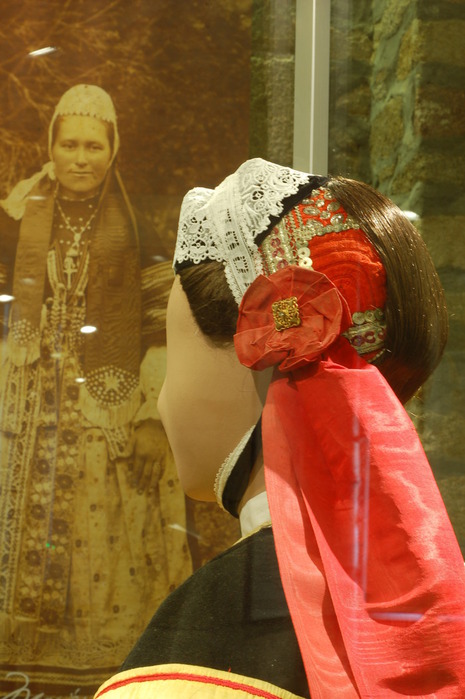
We go further along the coast and get into Concarneau surrounded by ancient granite walls of city fortifications. On Fridays, the traditional trade in fish and local delicacies takes place on the coast, against the backdrop of swaying brightly painted small and large ships. It is best to come here in the afternoon, when the trade has calmed down a bit, and the crowds of tourists have already subsided - you will feel the charm of this small coastal town, you can take a picture in the “frame” of a traditional Breton costume, drink a glass of wine in a coastal restaurant.
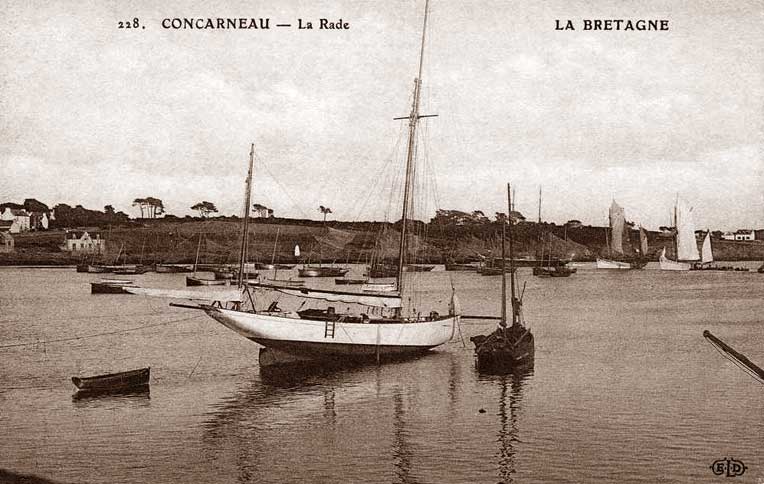

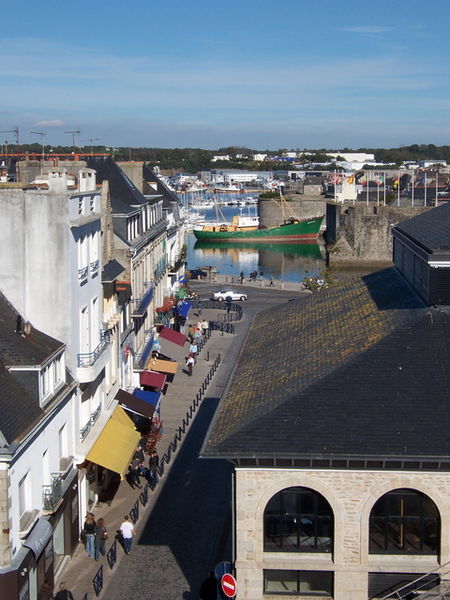
Concarneau consists of a modern port city on the coast of the sea bay and the old city of Ville-Close on an elongated island in the center of the harbor, connected to the land by a bridge. All the main restaurants, souvenir shops and the fishing museum are concentrated in the old town.
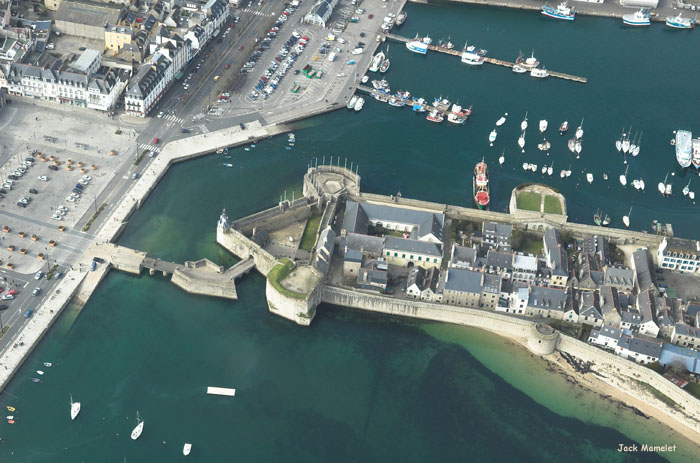
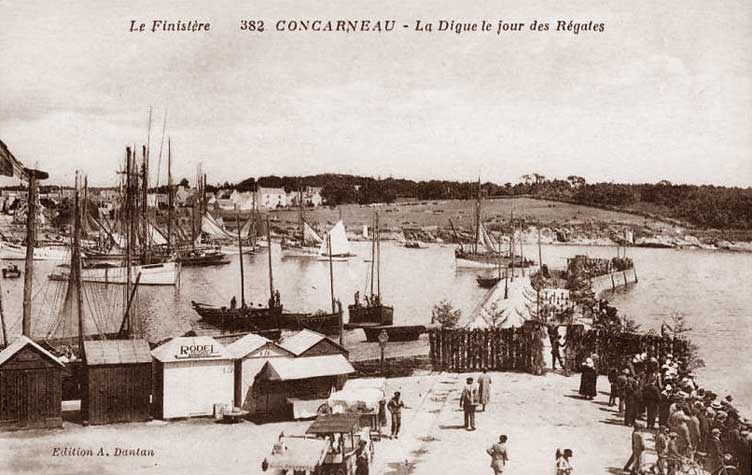
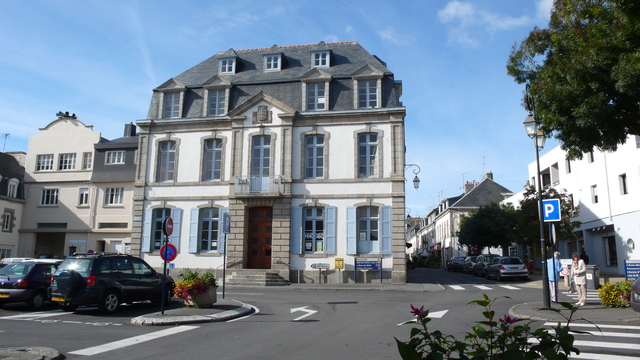
Every year since 1905 the city has hosted Costumed Blue Net Festival (French: Fete des Filets Bleus) dedicated to the traditional Breton fishing culture.
One of the most amazing sights in Brittany is menhirs (prehistoric structures made of large stone blocks) in the settlement Karnak (Carnac ), of which there are about 3000. The name Karnak comes from the Breton "karn", literally "a pile of stones".
Their appearance is attributed to the 6-3 millennium BC. so very little is known about their meaning. Conventionally, they are called "Karnak stones". This is the world's largest concentration of megalithic structures. They were erected by the pre-Celtic peoples of Brittany.

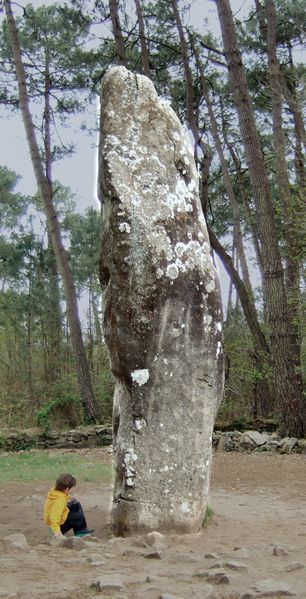
The complex of megaliths consists of several alleys:
- Les Menec (Les alignements du Menec)
- 11 converging rows of menhirs stretched over a distance of 1165 meters, the width of the composition is 100 meters.
- Alley of menhirs of Kermario (L'alignement de Kermario et le Manio) - consists of 1029 stones arranged in 10 rows about 1300 meters long.
- Alley of menhirs Kerleskan - consists of 13 rows with a total length of about 800 meters, in the very west there is a stone ring of 39 stones.
There are also several earth mounds poured over the graves. The mound usually has a passage leading to the central chamber, which once contained ancient valuable items.

Nearby are a number of dolmens
- ancient man-made structures of a certain shape built of large stones or stone slabs. They are considered to be ancient graves, and the absence of traces of bones in them is explained by the destructive effect of the acidic soil of Brittany. Dolmens are built from several large stones supporting one or more upper stones, often elongated and/or flat.
A little further on the coast is located Van (Vannes) . This is a small town on the Gulf of Morbihan, whose history goes back 2000 years. It is a city of rich traditions. Vannes is one of the cities recognized by the Ministry of Culture as "Cities of Art and History". The city regularly organizes medieval festivals, light and music performances and provides special illumination of architectural monuments, as well as traditional festivals of Breton culture or creative competitions.
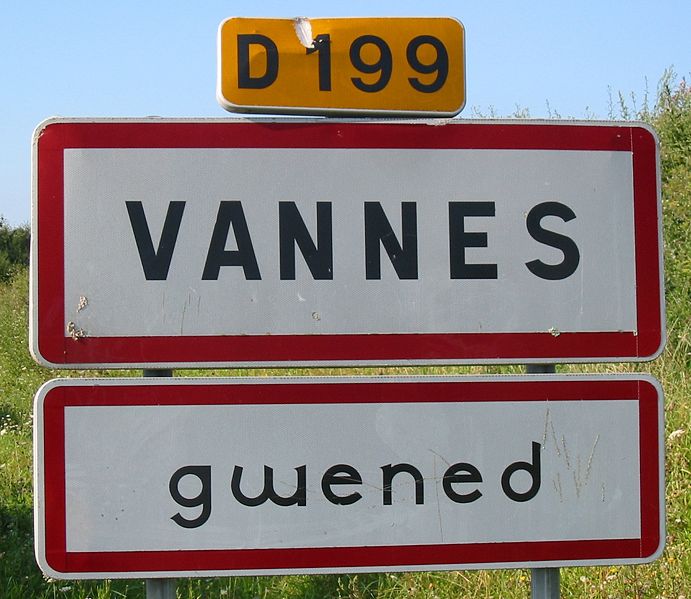
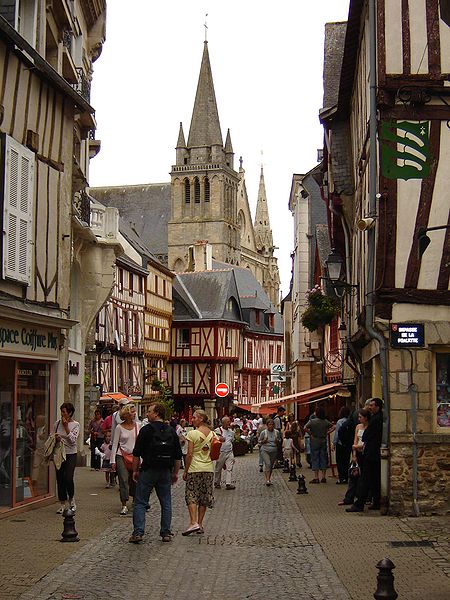
Inspection can start from the port, from the majestic gate Saint-Vincent (Porte Saint-Vincent) along the city wall to the Prison Gate (Porte Prison). This is a real walk through the ages. The whole history of military architecture will unfold before you: from sites preserved from the Gallo-Roman era to the entrance towers of the 14th-15th centuries. At the foot of the powerful walls, on the site of former orchards, a classic French park is laid out along the Marla River.
Half-timbered buildings of the 15th-16th centuries have been preserved within the city. One of them - on the corner of rue Noe - is decorated with a pretty stone sculpture "Lieutenant Wang with his woman" - a symbol of the city. The origin of the sculptures is not known, perhaps it was a commercial sign for a tavern.
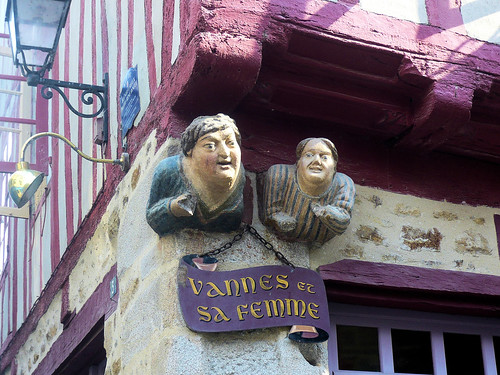
Like most ancient cities, the "old city" is protected by fortified walls. The ramparts are still preserved, from which a beautiful view of the city opens. In the center of the "old town" is a cathedral built in the 13th century.
Among the many attractions of the old city, a special place is occupied by old laundry (Lavoir) at the fortress moat. The 17th-century laundry house with steps overlooking the river is one of the oldest surviving buildings in Brittany. The building does not in any way fall out of the ensemble of the city, but, on the contrary, emphasizes its medieval features.
Another attraction of the "old city" is Archaeological Museum of Morbihan (Musee De La Prehistoire) . Here are exhibits from the time of early settlements in Brittany, as well as archaeological finds from the megalithic era found in the territory of Karnak. The museum is located in Castle Gaillard 15th century Château Gaillard was commissioned by Jean Malestrote, Bishop of Nantes and later Duke and 5th Chancellor (1408-1442).
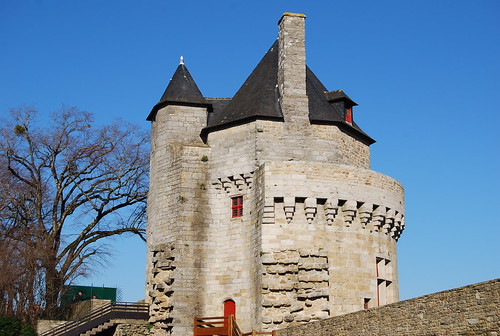
Cathedral of St. Peter (Cathedrale Saint-Pierre) - one of the most significant sights of the city. The oldest fragments of the temple foundation date back to the 12th century, but the main part of the building is an example of flaming Gothic (16th century). The interior of the cathedral, the central nave and ten side chapels are quite typical.
The round rotunda chapel in the Renaissance style, dedicated to the Holy Gifts, seems special. The walls are hidden by a magnificent tapestry from 1615 depicting the life of a saint.

It will be very interesting to visit Palace of Automatons (Palais Des Automates). This amazing museum will present to your attention a lot of constantly moving dolls. You yourself will get the opportunity to revive your favorite character. The museum has an exhibition area of 600 m2, which houses several hundred different machines and designs. Address: Allee Loec Caradec 56000 Vannes.
There are many castles and nature reserves in the vicinity of Vannas, where you can have a great time in a peaceful environment.
